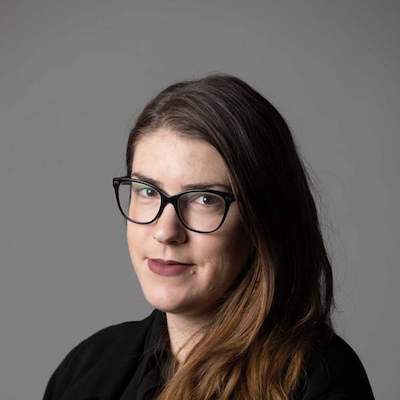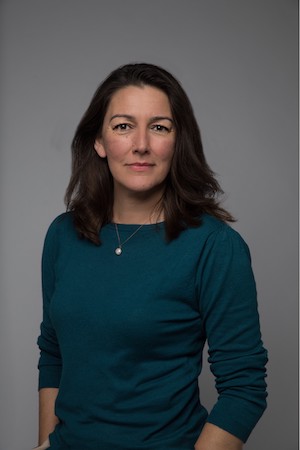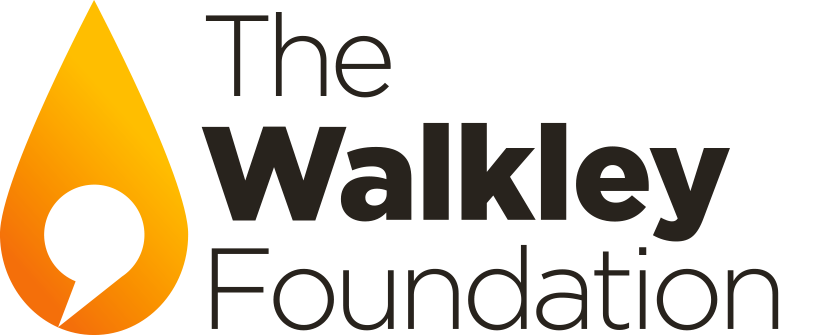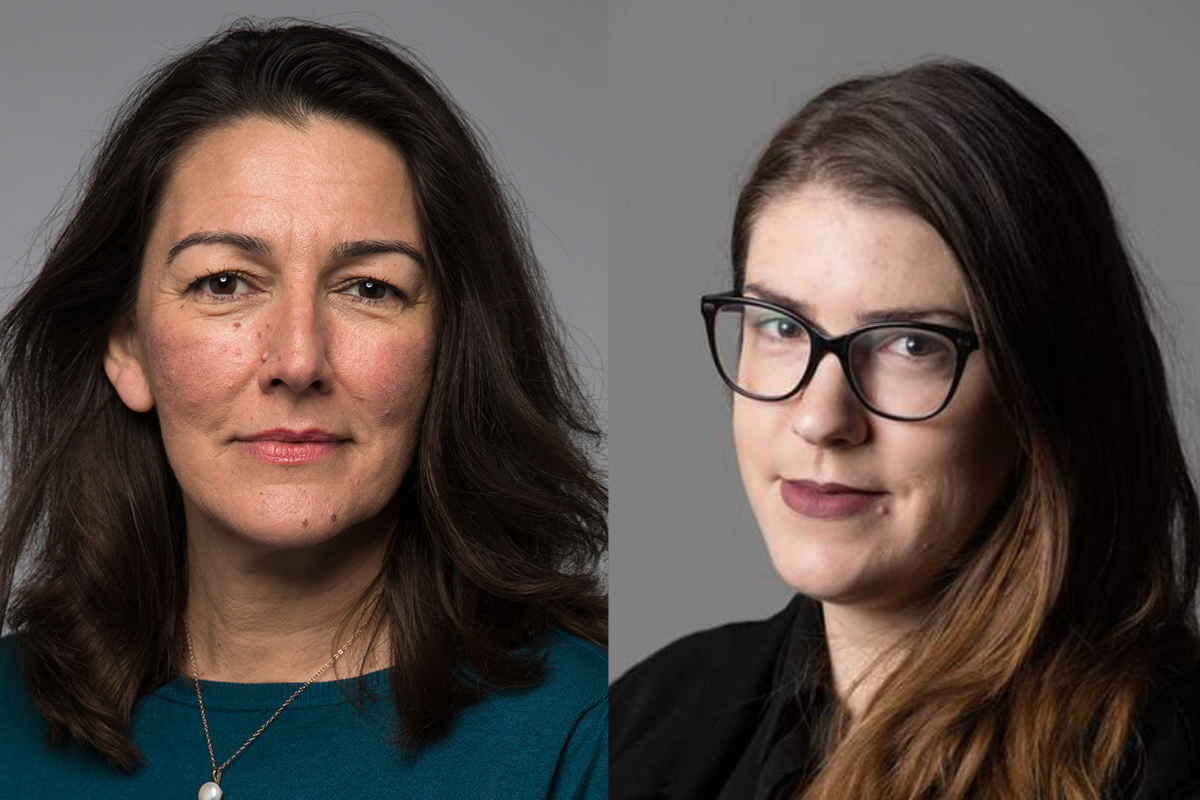Winners of the 2020 Walkley Award for Coverage of Indigenous Affairs for “Rio Tinto explodes Juukan Gorge, and BHP’s 24-hour backdown”.
On May 24, 2020, Rio Tinto destroyed a 46,000-year-old rock shelter that was sacred to the Puutu Kunti Kurrama and Pinikura people, against their express wishes. Guardian Australia reporter Calla Wahlquist’s first story on the explosion reached a global audience.
The destruction of the Juukan Gorge rock shelters became an international scandal, and Guardian Australia drove coverage of the issue both in Australia and in London, where Rio Tinto’s chairman and key investors were located.
Wahlquist and Indigenous affairs editor Lorena Allam went on to break the news that BHP had applied to destroy at least 40 registered Aboriginal sites. That application was approved three days after Juukan Gorge was destroyed. Within eight hours of publication, BHP had backed down.
In awarding the 2020 Walkley for Coverage of Indigenous Affairs to Allam and Wahlquist, the Walkley Judges said, “The destruction of the Juukan Gorge rock shelters was an international scandal. Calla Wahlquist and Lorena Allam’s extensive coverage for Guardian Australia sparked public protest and investor outrage, helping to prompt a parliamentary inquiry.“
We spoke with Lorena Allam and Calla Wahlquist shortly after the Walkley Awards about the depth of time, research and travel that went into getting the story together, the way it went internationally viral, and how the Juukan Gorge story is only the tip of the iceberg when it comes to destruction of First Nations sites.
Congratulations to you both for winning the Coverage of Indigenous Affairs Award for the huge Rio Tinto and Juukan Gorge story. How does it feel to be recognised by your peers for this particular piece of work?
Lorena Allam (LA): Oh, it’s incredibly satisfying to be recognised for this work in particular because it’s the kind of journalism I’m most proud of — persistent work bringing to light all of those hidden corners of a story that the public weren’t aware of before.
A lot of the details that we’ve reported were surprising even to those of us who work in this business; that such arrangements and such agreements had been allowed to flourish for so long. It’s a particularly proud moment because it’s the kind of reporting I’m really proud of.
Calla Wahlquist (CW): Yeah, picking up on what Lorena said, it is gratifying to see that the judges and everybody else was as outraged by what was happening as we were, and as the people we were speaking to were. As Lorena said, she’s been writing about agreements between traditional owners and mining companies for ages. I’ve been writing about the Aboriginal Heritage Act for at least five years, so we’re pretty across it, and we were still coming across stuff that we were just shocked by.
And so it is really good, but also, and this might be slightly sacrilegious to say, but it almost feels anticlimactic because I feel like the really amazing stuff with this story was going from having the company offer a non-apology to offering a sincere apology, to flying in the CEO to offer an apology, and then the CEO and all these other people resigning. And then having mining companies go from saying that their practices would never be like this, to officially pledging to change their practices.
The really amazing stuff with this story was going from having the company offer a non-apology to offering a sincere apology, to flying in the CEO to offer an apology, and then the CEO and all these other people resigning.
So as wonderful as it is to be recognised by your peers, and it always is wonderful, I think the standout was the day when we went, “Oh, wow. There’s an outcome.”
The story obviously had very powerful effects, including the resignations of Rio Tinto’s CEO — were there any other impacts beyond what you’ve mentioned?
CW: Even just at the really basic level, when we first started reporting what the PKKP Aboriginal Corporation was saying, we had other traditional owner groups and Aboriginal corporations in the area come and say to us, “we’ve known about this for years [but] we’ve not been able to get any traction on it or we’ve not had the ability to come forward, or there’s not been this support and protection for us to come forward.”
Lorena can probably speak to this better than I can, but that was among the most impactful moments for us, talking to these Aboriginal groups and these Elders who were finally getting some kind of traction and someone speaking to them who had read about Juukan Gorge, and being able to say, “Hey, that happened to us or that’s happening to us. Can you help?”
LA: It was really important for them to feel like they could and would be heard for a change. I think that they had felt stymied, and certainly we reported that they had been gagged to a certain extent by the agreements that they had been asked to sign with these powerful mining companies. It also has drawn a lot of attention to the way that the industry operates more broadly. And the other impactful thing was seeing shareholders globally stand up and say, “We are asking serious questions about companies that continue to engage in these kinds of practices, because we think it’s bad for our investments. It’s bad for our social license.”
“It also has drawn a lot of attention to the way that the industry operates more broadly. And the other impactful thing was seeing shareholders globally stand up and say … it’s bad for our social license”
That was incredible, to watch the way that shareholders really took this on board, and there’s still so much more to this story that has yet to be reported. There are so many aspects to it that are still in play and we’re going to continue to follow them.

Calla Wahlquist over Zoom
Where did the first story thread appear, when you realised that they were planning to blow up these sacred sites for a mine?
CW: It came from the PKKP Aboriginal Corporation, who issued a press release to a couple of journalists including myself and a couple of others, basically saying the site’s been destroyed. They issued it on 25 May, so it was blown up on the 24th.
We just picked it up from there and it was a bit slow to gain traction. It’s almost one of those stories, because it happened in Western Australia, there’s almost a bit of a non-reaction to it because it’s quite a common thing to happen. We were reporting it as an outrage, but not expecting it would be as agenda changing as it turned out to be. But then it got picked up overseas and we started hearing from other sites and groups and it went on from there.
I would hate for people to think that we’re claiming that we were [entirely responsible] for this one; this was the bravery of the PKKP Aboriginal Corporation coming forward and speaking about the fact that they had a non-disparagement agreement with Rio Tinto, despite the fact that they knew they could face legal action if they spoke out, and they spoke out anyway because [it was] their heritage and it was important. They really deserve the changes that happened because of them.
The story definitely blew up and caused a lot of outrage quite quickly, and deservedly so.
CW: It was shared around in Australia and people expressed outrage about it, but it didn’t seem to make the same impact in investment circles here until London got annoyed and that happened pretty much straight away.
Because we have our parent companies in the UK and we share stories across sites, the London version of the website picked it up and pinned it onto their front page. And that meant that people who run these big investment banks in London who are major shareholders in Rio Tinto read it. And that, I think, is what made the financial sector in Australia [take action].
They take their cues on these community and social license aspects of investing from Europe and when that happened, that was when the banks in Australia started to pay attention, and superannuation banks in Australia started to pay attention.
LA: And then off the back of that was Rio Tinto’s own pretty underwhelming response. At first the Australian iron ore boss was issuing public apologies in the media, but it didn’t assuage anyone’s concerns, in fact, it made things worse.
So I think at that point there was no stopping the story, in the sense that it was only going to get bigger. Rio asking for its top three executives to step down was a major outcome. But what I think our reporting helped expose is that this is a systemic problem in the iron ore industry in the Pilbara, which has been allowed to operate under some very lax supervision and a legislative regime that entirely favours their interests at the expense of traditional owners.
Once all those things combined and became public knowledge, I think there was an inevitability about those senior executives losing their roles. But what I want people to not lose sight of is the fact that this continues to happen. I mean, Rio Tinto still holds 1700 permissions to destroy or disturb Aboriginal heritage in the Pilbara.
Other companies own hundreds of similar permissions, which will remain valid even after new legislation is introduced in WA to close that loophole. So this is a systemic problem, and we hope that the shareholders of these companies continue to keep monitoring it.

Lorena Allam over Zoom
Was that something of a first for you, in your experience, to see pressure on mining companies coming from shareholders?
LA: Yeah, absolutely. Calla and I’ve talked about this quite a bit, because in our experience it’s a huge result, as so much Aboriginal heritage has been destroyed and desecrated in the past with no consequences at all.
So what were the factors this time around? And I do think it was the power of shareholder activism, combined with really proactive Indigenous groups who across a number of fronts and worked very hard behind the scenes to maintain the pressure on these companies.
Also the land councils and others who formed a coalition to lobby investors and educate them on the companies and the landscape in which they were operating.
CW: One of the first really big things that happened, which probably doesn’t seem big in isolation but had a knock-on effect, was Reconciliation Australia severing their relationship with Rio Tinto.
Reconciliation Australia is not the most powerful or influential body, but that type of endorsement from that kind of body is really central to all of these mining companies. They all have these partnerships with a particular, I suppose, mainstream Indigenous organisation and often they’ll use that as a way to prove that they have a really good relationship with Indigenous Australians because they have a really good relationship with a body like Reconciliation Australia.
Often those relationships are a long way, both physically and in terms of culture, standards and ambitions, from the traditional owner groups on whose land the [mining companies] are operating.
So the fact that Reconciliation Australia went, “Nah, we’re just not going to back you on this.” I think that was probably the biggest signal to investors, because if they hadn’t done that, then Rio Tinto would have been able to continue to argue “we have a great relationship with our Indigenous people. Look at this partnership we have with Reconciliation Australia.” That was a really significant thing that Reconciliation Australia did.
The other thing I forgot to mention, which is easy to forget given the year that we’ve had, but this happened right after about three solid weeks of really intense Black Lives Matter protests in the US, UK, Australia and Europe. It happened after the toppling of statues, when the role of colonialism and racism was front of mind globally. It was a really significant week in Australia, so close to Sorry Day, and globally everyone was having to reckon with this. I think this news story coming out towards the end of that global movement meant that people were less likely to let it slide by.
“The only way the PKKP found out that their site was about to be destroyed is because they asked Rio Tinto for permission to hold a NAIDOC event there, and that’s when they discovered that the blast holes had been loaded and the place was about to be blown up.”
LA: It happened at the start of Reconciliation Week, so the timing could not have been worse. The only way the PKKP found out that their site was about to be destroyed is because they asked Rio Tinto for permission to hold a NAIDOC event there, and that’s when they discovered that the blast holes had been loaded and the place was about to be blown up.
As Calla said, there was this action in the Pilbara which ran absolutely counter to the entire global conversation, and people reacted accordingly.
What was it that made each of you get into journalism in the first place?
LA: (Laughs) it was a long time ago, back in the dim, dark… No, I wanted to do journalism because I had educational opportunities that lots of my family never got. My grandmother was born on a reserve right up on the Queensland border in far west New South Wales, and she was allowed a year of schooling in her life — and that year of schooling was administered by the mission manager’s wife, not a proper teacher.
So for my grandmother, and for my father who had to leave school at a young age, the opportunity to get a good education and go to university was mine and I didn’t want to waste it. So I studied journalism and I was lucky to land a cadetship with the ABC a long, long time ago. I have spent most of my career in radio for the ABC, actually, as a broadcaster, radio producer and newsreader in general.
“I could see the power the media had to stereotype and misrepresent Aboriginal people, and I saw an opportunity to kind of chip away at that as best I could over time.”
I could see the power the media had to stereotype and misrepresent Aboriginal people, and I saw an opportunity to kind of chip away at that as best I could over time. Now, at The Guardian, it’s a fantastic place because they want to do this kind of work. The type of [Indigenous affairs] projects that we’ve been involved in and spearheaded are entirely due to the fact that our editor, Lenore Taylor, passionately believes in this work and the power of it to bring social change. So I’m really delighted to work at The Guardian.
CW: My path to journalism is nowhere near as impactful as Lorena’s. I started a law degree, hated it and went to journalism. I got into a bit of a panic, and then a tutor in one of my journalism classes called me up and said, “There’s a cadetship available. I think you could actually go for it.” I thought I was going to be rubbish at journalism so I’d never really thought about pursuing it. I didn’t end up getting the cadetship that was on offer — I don’t even think I put in my application — but it made me realise, “Oh, maybe I can actually do this thing,” and then I moved to Western Australia to take up a cadetship at the Bunbury Mail.
I moved around a bit and I was back in Western Australia in 2014/15 when The Guardian decided they wanted a Perth correspondent. I was lucky enough to get that job and be based with The Guardian there for a year, which was when I first started reporting on the Aboriginal Heritage Act.
At the time there just wasn’t a lot of reporting on what I thought were the most interesting issues happening in Western Australia, which included al the heritage stuff.
I’ve been lucky to be with The Guardian ever since, as Lorena said, just the kind of work we get to do here, like “Deaths inside” and Lorena’s amazing massacres project (Walkley-winner “The Killing Times).
I’m not sure they were certain what they wanted out of a Perth correspondent, so I would call [editorial] up and say, “Hey, can I go to the Yule River Meeting on Country in the Pilbara?” And they’d be like, “Sure, we’ll fly you up.” So it was really a great way to be able to cover those kinds of stories that I don’t think I’d have been able to do if I was working for another publication in Perth.
Do each of you have a message for the Australian public about why this kind of public interest journalism is so important, perhaps now more than ever?
LA: I think what it shows is that facts matter. Thankfully we’ve seen the end of the Donald Trump presidency now but, you know, the idea that we are living in this post-truth world is deeply troubling because with a lack of truth and trust you can’t place your faith in institutions. You need to be able to place your faith in the institutions that govern your life, and good journalism calls them to account, shines a spotlight when they’re not doing the right thing, and hopefully pushes for change.
“When I said I was really proud to be recognised for this kind of reporting, it’s because this is the kind of reporting that the public needs to know about — the decisions that are being made in our names”
At the beginning, when I said I was really proud to be recognised for this kind of reporting, it’s because this is the kind of reporting that the public needs to know about — the decisions that are being made in our names and whether we are prepared to to live with those, or whether we want to ask harder questions of our leaders and the ways that companies operate. Companies that take the money of retirees and superannuates around the world.
More and more, it’s important to support good, independent journalism, because we can see — from what’s happened in the States and even here — the precarity of our democratic institutions. And journalism is one of the most important pillars for maintaining that kind of stability in our society, and for championing fairness.
CW: I also think this story is a reminder to think about and look at the context of things. We’ve been talking a lot specifically about the destruction of Juukan Gorge, which was horrific, but the fact is that my first reaction, as someone who’s worked in Western Australia, was “Oh, another one… This is a thing that happens”.

Image: Juukan Gorge via The Guardian
You can have the company argue that, “Well, we had to get rid of this one site in order to access this amount of funds, which were then channelled back into communities.” But it’s not just one, there are thousands of these sites that have been approved for destruction, and hundreds that have been destroyed recently.
It’s so difficult to even find information about what’s been destroyed. One of the things that was amazing about Juukan Gorge was that someone had actually done a study to see what was there before they destroyed it. That’s unusual. Normally we just destroy it.
That’s something in our reporting that I was really proud of, that we were able to say, “This isn’t just one incident and don’t let it just be one incident”. Rio Tinto and BHP are of a piece, they do the same sort of [work] and they judge themselves by each other. So you have to look at all of the companies that are operating and everything that’s happening in that space.
I also think it’s a reminder [to journalists] to not take a guarantee of consent from the company that is doing the damage. Although we’ve gotten better in recent years, there’s still a tendency — particularly in places like Western Australia and places where First Nations people have English as their second or third or fourth language — there’s just this tendency that it’s easier for reporters to talk to the PR person of the mining company and have the mining company tell you what the traditional owners said rather than speak to the traditional owner groups.
It might take a bit longer because mobile phone reception up there isn’t great, but I think it’s a lesson in asking, “Well, what do the people to whom this has happened actually think about it?”
Is there anybody you’d like to thank who contributed to this story, anybody who hasn’t been recognised and deserves a shout out?
CW: Obviously the PKKP Aboriginal Corporation and all the other Aboriginal corporations that we dealt with and spoke to. We’re always very grateful that people are willing to talk to us, tell us their stories and trust us with their information. Particularly because these are people who have probably not had the best experiences with the media in the past. And as Lorena said, the fact that we’ve got an editor like Lenore Taylor. When we wanted to write a big article investigating this and gave an estimation of how long it would take, we were just given the time, which is really unusual.
LA: The Guardian gave us the time it took to investigate this story, and I’m really grateful to our colleagues for putting up with us just obsessing about (laughs) Rio Tinto for months and months. We were so deep in investigating and understanding [the story], and the editors were very patiently saying, “Well, you have to explain Section 18, you have to explain…” So I’m very grateful to those people who helped us clarify an incredibly complex story and made it palatable, readable and impactful. And the traditional owner groups who are still fighting this fight today and will be next week and next month. They’ve been quite heroic in their determination to have their voices heard.
CW: We also had assistance from lawyers who specialise in this area; engineers and people who work in mining who didn’t necessarily provide comment on the record, but we were able to call them up and ask them really technical details.
It’s important to note that this is not just a mining versus Indigenous people story. I knew people in the mining industry who were also shocked and really annoyed that this had impacted their reputation. But we got a lot of technical advice from people who understand what are sometimes just stupidly complicated pieces of legislation.
LA: I’m glad you failed law. (laughs).
Read all the 2020 Walkley Award-winners here.

Calla Wahlquist is a Melbourne-based reporter and feature writer with Guardian Australia covering regional affairs, social justice issues and Indigenous affairs.
 Lorena Allam is a Gamilaraay and Yuwalaraay woman whose country lies in the Dhariwaa or Narran Lakes area of far west NSW and spans the border with south-west Queensland. Allam has been a journalist and broadcaster for 30 years, working for ABC News, Triple j, Radio National, ABC TV and online. Allam is the Indigenous affairs editor for Guardian Australia.
Lorena Allam is a Gamilaraay and Yuwalaraay woman whose country lies in the Dhariwaa or Narran Lakes area of far west NSW and spans the border with south-west Queensland. Allam has been a journalist and broadcaster for 30 years, working for ABC News, Triple j, Radio National, ABC TV and online. Allam is the Indigenous affairs editor for Guardian Australia.


